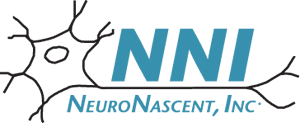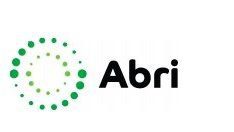
NeuroNascent Takes New Path for Alzheimer’s Treatment
Alzheimer’s disease has been one of the toughest disorders for drugmakers to tackle, with multiple trial failures year after year. Companies have exhausted resources as they examined different pathways in what have mostly been futile attempts to develop a therapeutic to halt or delay the onset of this devastating neurodegenerative disease.
With the exception of Biogen’s recently-approved Aduhelm, there are few approved drugs on the market for Alzheimer’s, a progressive form of dementia that affects more than 6 million people in the United States. Most of the available medications only treat certain symptoms related to Alzheimer’s, including cognitive behaviors. If a patient responds to treatment, it’s typically for a short period of time before Alzheimer’s continues its destructive assault. Aduhelm (aducanumab) was the first drug approved to address the underlying biology of Alzheimer’s disease, however, its approval was controversial as it was made against the advice of the agency’s Peripheral and Central Nervous System Drugs Advisory Committee, which voted against recommending approval last year.
While others have failed, there is still hope in Alzheimer’s treatment with new pathways being explored by companies such as Maryland’s NeuroNascent, Inc. Founder and Chief Executive Officer Judith Kelleher-Andersson, Ph.D. said she has long thought there needs to be a new approach to treating Alzheimer’s, especially given the fact that so many trials engage suspected Alzheimer’s targets, that are not yielding the hoped-for results, such as beta-amyloid theory.
Kelleher-Andersson said a new approach was needed, one that took into account the effect of aging on the brain, as well as the progression of Alzheimer’s. She believes the approach is to find a therapeutic way to safely produce new neurons in the brain.

Judith Kelleher-Andersson, Ph.D.
“It’s not about slowing disease over time, or inhibiting further neuron loss. There will never be enough remaining neurons for these patients, if new neurons are not be produced. There must be a way to restore function in patients,” Kelleher-Andersson said. “We want to ensure that we have a curative therapy, not one that just slows down disease progression.”
What is needed is what Kelleher-Andersson calls a rejuvenation product, and that’s what she believes NeuroNascent has in its lead drug candidate, NNI-362. A new chemical entity, NNI-362 is NeuroNascent’s experimental method to reverse age-related disorders through the production of new neurons that have been lost due to chronic neurodegenerative disorders.
Essentially, the idea is that NNI-362 replaces neurons that are lost in the brain. Kelleher-Andersson said the asset is selective for the brain and neural tissue. There are regions in the brain that are called neurogenic niches, which is where neurogenesis takes place, which is the process where new neurons are formed in the brain. NNI-362 is selective for those regions of the brain, she said.
Kelleher-Andersson believes that the disease-agnostic neuron replacement/enhancement therapy has the potential to be a first-in-class oral therapy that can halt and even reverse Alzheimer’s and other age-related behavioral deficits. She suggested that the asset is disease agnostic because it does not appear to matter how brain neurons die. NNI-362 has shown capabilities to regenerate those lost neurons in preclinical models, no matter the source of the brain modifying neurodegenerative issue.
“What it does is uses the brain’s own capacity to regenerate and compensate for injury. We’ve known for years that the brain can compensate, but that ability to compensate isn’t enough in chronic, progressive Alzheimer’s. NNI-362 takes advantage of the brain’s own capacity to regenerate. It’s ramping up the brain’s own ability,” she said. “Our intention to reverse the cognitive deficit.”
NeuroNascent recently ran NNI-362 through a Phase 1a study supported by the National Institute on Aging. It was a safety and tolerability study that included 56 healthy aged subjects between the ages of 50 and 72 years. Data showed NNI-362 was safe and well-tolerated. In fact, the asset initially appears quite safe, as ascending doses of NNI-362 never reached a Maximum Tolerated Dose (MTD). Trial data shows that any potential drug-related events were of mild grade and corrected themselves without concomitant medication.
The company is now aiming for a Phase II proof-of-concept study. But, before that can begin, Kelleher-Andersson said there are a few more tests that must be conducted, and the company’s manufacturing must be ramped up.
“It’s quite a process to get to that point,” Kelleher-Andersson said. She added that the Phase II trial could be about a year away.
In the meantime, the Clarkesville, Maryland-based company is also exploring a potential Series A fundraising round in order to support its continued development plans for NNI-362, as well as NNI-351, an experimental asset designed for developmental delay in individuals affected by certain rare diseases.
NeuroNascent is also assessing NNI-362 in Parkinson’s disease, another neurodegenerative disease. Kelleher-Andersson expressed her excitement at the potential impact NNI-362 can have on millions of people with these devastating and life-altering conditions.





